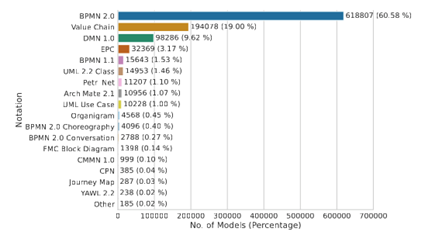Objectives of the training
To provide the knowledge and skills required to understand the main elements of the BPMN 2.0 standard and to produce business process models in MS Visio.Targeted audience
Professionals who need a structured approach to model real-life work situations. Managers in charge of steering, monitoring and controlling processes. Technical experts (business architects, business process designers) responsible for deploying enterprise solutions. Analysts (business analysts, consultants, IT professionals) responsible for creating and improving operational and functional processes.Prerequisite
Ideally know Visio or have taken the training course "Use Visio for processes, maps, plans and more" (MS567)Trainers
Course architecture
- Know the basic concepts of business process management (BPM).
- Understand the main elements contained in the BPMN 2.0 standard.
- Understand the basic conventions of process modeling.
- Understand the main symbols and notations of the standard.
- Produce simple process flow diagrams.
- Identify processes, tasks and situations in their work environment that have similarities with the concepts covered.

- What are the key concepts of process management
What is Business Process Management (BPM)
What is BPMN: the elements contained in the BPMN 2.0 standard, nature, specificities and objective of BPM.
How to fill the gaps of traditional mapping with BPMN 2.0
How to give visibility on organizational processes
- What is a business process
The life cycle of a business process (modeling, deployment, optimization, etc.)
Process framework (definition, structuring, limits)
Process management (steering processes, business processes, support processes, etc.)
- How to model processes
Model elements (initial state, final state, activity sequence, abstraction levels, sub-processes)
Graphical elements of modeling (activities, gateway, events, flows, etc.)
- What are the characteristics of the tasks
Nature, specificities, definition, graphical characteristics, types of tasks
Abstract task, user task, manual task, send/receive task, business rule, service task, scripted task.
- How to use activity markers
Sub-process marker
Loop marker
Multiple parallel instance marker
Multiple sequential instance marker
Ad-Hoc marker
Compensation marker - Meaning of the different types of borders
- Roles and Meaning of Branches
What is a gateway
Flow with divergent branching when several paths are possible
Flow with converging branch when several situations are possible
Symbols of the branches
- What is an event in BPMN
Trigger, intermediate or terminal event
Multiple starts
Peripheral events (switch/non-switch)
Events and sub-processes
Events and messages
Intermediate and peripheral messages
Difference between message and signal
Timer event
Conditional event, hyperlink and subprocess types
Transactions - The different types of flows and their rules
- Pool & Lane and their rules
- How to build a collaboration diagram
- Data rules in BPMN
- Approach to modeling a process in BPMN
Establishing a scope
Develop a summary map
Designing a BPMN diagram (parent and child processes, adding flows) - How to use MS Visio to map processes
Overview of MS Visio software, menus, functions, templates and shapes useful in mapping
Review of useful MS Visio functions: connecting shapes, modifying shapes, creating templates, using shape data and reporting shapes, layout and printing.
Training Notes
This training provides the basics for future certification in the BPMN 2.0 standard.
This course is presented using the 2024 Professional version. Students are asked to bring personal business mapping examples to class to help target their learning needs.
Private or personalized training
If you have more than 8 people to sign up for a particular course, it can be delivered as a private session right at your offices. Contact us for more details.
Request a quotePrivate or personalized training
If you have more than 8 people to sign up for a particular course, it can be delivered as a private session right at your offices. Contact us for more details.
Request a quote

